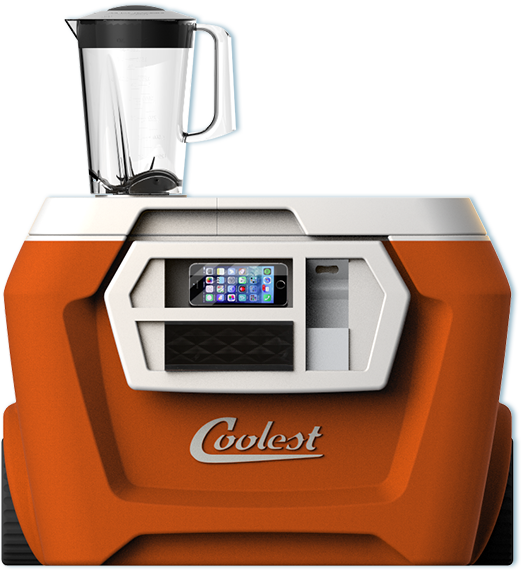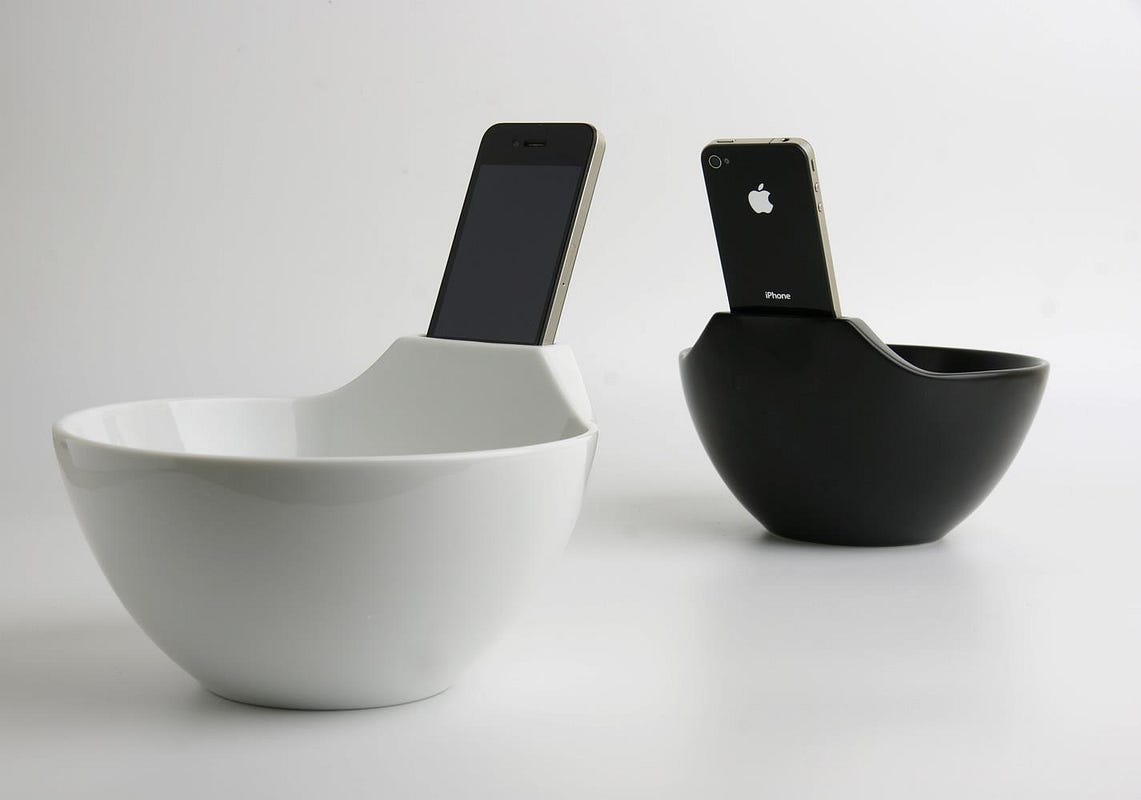https://medium.com/re-form/just-because-you-can-doesnt-mean-you-should-252fdbcf76c8
Yes We Can.
But Should We?
The unintended consequences of the maker movement
"A 3D printer consumes about 50 to 100 times more electrical energy than injection molding to make an item of the same weight. On top of that, the emissions from desktop 3D printers are similar to burning a cigarette or cooking on a gas or electric stove. And the material of choice for all this new stuff we’re clamoring to make is overwhelmingly plastic. In a sense, it’s a reverse environmental offset, counteracting recent legislation to reduce plastic use through grocery bag bans and packaging redesigns. While more people tote reuasable cloth bags to the supermarket, plastic is piling up in other domains, from TechShop to Target."
/////////////////////////////////////////////////////
Last spring, I attended the Bloomberg BusinessWeek Design Conference in San Francisco. Ben Kaufman, the CEO of Quirky, was one of the speakers in a conference that unabashedly celebrated consumption (and only had three female speakers, but that’s another story). Kaufman went on at length about the dearth of products reaching the marketplace — and how his company was helping to remedy that. Patents were in the way, regulations were in the way, he went on, but Quirky was committed to getting products to market quickly, indeed twice weekly.
Quirky has been clever in melding the old-school notion of being an “inventor” with the new-school notion of being a “maker.” But somewhere in the course of entering the pop culture zeitgeist, the warm and fuzzy self-empowered “maker” idea got turned into an engine for output and profit. No idea is too superfluous. Many of the items the company sells are gadgets like “Pivot Power,” designed expressly for plugging in other gadgets. It felt to me that the very purpose of Kaufman’s endeavor was to get more stuff on shelves, or what he referred to as “social product development.”
Not so long ago it felt like we were beginning to recognize that as a society, our patterns of production and consumption were not sustainable. Messages like The Story of Stuff went viral, refocusing our collective eyes on our culture’s stunning material wastefulness. But that period was short, and the resolve for change it seemed to herald has all but evaporated. While many innovative companies have been focusing on selling experiences rather than manufacturing goods, the drive to produce more has only accelerated.
Technology has become not only more sophisticated, but access to its bells and whistles has become relatively more affordable and accessible. With this, ideas around designing and making have shifted and sectors of the maker movement have veered from basement workshop projects to the production of i-accessories and other trinkets that make Kickstarter fanboys drool. Just as desktop publishing tools made everyone [think they were] a graphic designer, 3-D printers and the like have empowered legions to be the next Jony Ive. (Not incidentally, why must every last bit of product design be measured by whether it would make Ive proud?)
I won’t point the finger at one company or one discipline but I am struck by the absence of sustainable discourse in the maker movement. Daily, we read swooning odes to the 3-D printer, the CNC router and other cutting edge manufacturing technologies but read almost nothing that approaches these developments through a much-needed critical lens. Every tchotchke is celebrated as if it were as significant as the wheel or the printing press.
In Japanese culture, there is a word for this: chindogu. The literal translation is “weird tool,” but the concept is about utility, or lack thereof.Kenji Kawakami coined the term as a way to point out objects that are invented under the premise of solving a problem, but which, in practice, only generate more problems, rendering them devoid of utility. Kawakami humorously calls them “unuseless,” which is to say, they have a function, it’s just not one that helps us (and it may be one that harms us).
Day after day I read glowing “stories” (aka slightly modified press releases) on egregious products like the Anti-Loneliness Ramen Bowl, a gadget designed to hold your soup and prop up your iPhone. As artistic commentary on our current cultural condition, such an object is worthy. It points to our round-the-clock addiction to connectivity, our intimate relationship with gadgets, our increasing physical isolation. But the highest purpose of such an object is in the statement it makes, not in being manufactured for all the world’s kitchen cabinets. In the internet age, a good concept object can be made once, spread widely, and never mass-produced.
Maker-inspired initiatives are creeping into the corporate sphere, as well. Earlier this year, Hershey’s (of all companies) showed up at the Consumer Electronics Show with an announcement about their quest to make a 3D-printer for chocolate. For the company, this big trade-show reveal signaled how innovative and on-trend they are. But does every home need an additional printer exclusively for on-demand chocolate bars? The degree of additional energy and material output required to bring this concept to reality is almost unfathomable.
In Why Things Bite Back, Edward Tenner writes of what he calls the “ironic unintended consequences’’ of human ingenuity, ranging from antibiotics that promise the cure of disease but end up breeding resistant microorganisms, to a new football helmet, designed to reduce injuries, that actually encourages a more violent style of playing, thus creating the risk of more serious injury. We’re experiencing some of these ironies now as we use technology to solve the wrong problems. We’re in a period where almost anyone has the tools to make almost anything – but are we making the right things? Or too many of the wrong ones?
There seems to be a misconception about what 3D printing does and does not enable. Does it allow us to delight a four-year-old by pulling a mini Darth Vader toy seemingly out of thin air? It does. But the object doesn’t materialize from nothing. A 3D printer consumes about 50 to 100 timesmore electrical energy than injection molding to make an item of the same weight. On top of that, the emissions from desktop 3D printers are similar to burning a cigarette or cooking on a gas or electric stove. And the material of choice for all this new stuff we’re clamoring to make is overwhelmingly plastic. In a sense, it’s a reverse environmental offset, counteracting recent legislation to reduce plastic use through grocery bag bans and packaging redesigns. While more people tote reuasable cloth bags to the supermarket, plastic is piling up in other domains, from TechShop to Target.
For the world of design and maker culture, it’s Karim Rashid all over again, just in white t-shirts instead of white suits.

Good design is often defined as being an elegant solution to a clear problem. Perhaps we’re solving the wrong problems — or inventing problems that don’t exist — as justification for our excessive output. Do we need more products? Not really. But we need better ones. So why aren’t we designing them? Why are we reading about so many bad ones? Why, for example, did more than 62,000 people recently pitch in to fund a new drink cooler that doubles as a beverage blender (and triples as a stereo) to the tune of$13,285,226?
This is not to say that there aren’t good things happening in the maker space, things that run the gamut from the attractive and functional Floyd Leg, which turns any flat object into a sturdy table; to endeavors like Repair-Ware and i-Fixit, which attack planned obsolescence head-on; to a place likeThe Tinkering School, which encourages kids to make stuff for the sake of making it (they then disassemble what they’ve created and reuse the materials). We need these avenues for supporting craft and DIY, developing an alternative to consumerism rather than a direct line to it.




